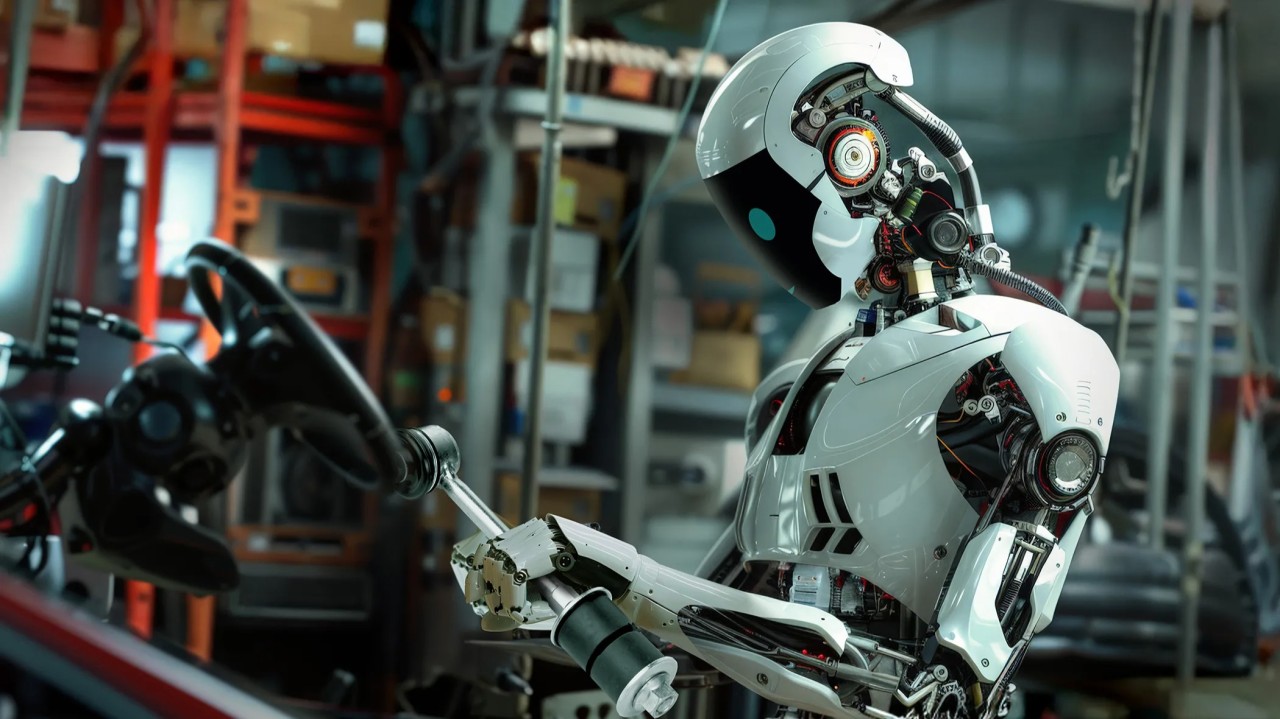
The best MCUs/MPUs for industrial humanoid robots
Global electronic component supplier AMPHEO PTY LTD: Rich inventory for one-stop shopping. Inquire easily, and receive fast, customized solutions and quotes.
For industrial-grade humanoid robots, the choice of MCUs (Microcontroller Units) and MPUs (Microprocessor Units) must prioritize real-time performance, reliability, high-speed communication, and ruggedness to handle demanding tasks like precision motion control, force sensing, and AI-driven automation.

Here are the best MCUs/MPUs for industrial humanoid robots, categorized by function:
1. Real-Time Motor Control & Low-Level Actuation
Industrial robots require deterministic, low-latency control for servo motors, hydraulic/pneumatic actuators, and torque sensors.
Recommended MCUs:
-
STMicroelectronics STM32H7 (ARM Cortex-M7/M4, 480 MHz+)
-
Features: EtherCAT, CAN FD, hardware FPU
-
Use case: High-speed servo control, robotic joint controllers
-
-
Texas Instruments Sitara AM6x (Dual Cortex-A53 + PRU-ICSS for real-time I/O)
-
Supports Time-Sensitive Networking (TSN) for industrial comms
-
Used in: ABB, KUKA industrial arms (similar needs to humanoids)
-
-
Xilinx Zynq UltraScale+ (FPGA + ARM Cortex-A53/R5)
-
Combines real-time control (FPGA) with Linux-capable CPU
-
Used in: High-end industrial robotics (e.g., Agility Robotics Digit)
-
-
Infineon AURIX TC3xx (Triple-Core Lockstep for functional safety)
-
ISO 26262 ASIL-D certified (critical for industrial safety)
-
Use case: Fail-safe motor control in collaborative robots (cobots)
-
2. High-Performance AI & Vision Processing
Industrial humanoids need real-time perception (3D vision, LiDAR, SLAM) and AI-based decision-making.
Recommended MPUs/SoCs:
-
NVIDIA Jetson AGX Orin (2048-core GPU, 275 TOPS AI)
-
Used in: Tesla Optimus, Figure 01, Unitree H1
-
Supports ROS 2, CUDA, and real-time AI inference
-
-
Intel Core i7/i9 + Movidius Myriad X (for hybrid CPU/VPU acceleration)
-
Use case: Industrial inspection, object recognition
-
-
AMD Ryzen Embedded V3000 (Zen 3, multi-threaded for heavy workloads)
-
Supports real-time Linux (PREEMPT_RT)
-
Used in: High-speed automation robots
-
3. Industrial Communication & Networking
Industrial robots require deterministic communication protocols for PLC integration and multi-robot coordination.
Key Protocols & Supported MCUs/MPUs:
-
EtherCAT → STM32H7, TI Sitara AM6x, Xilinx Zynq
-
PROFINET RT/IRT → Infineon AURIX, NXP i.MX RT
-
CAN FD → STM32G4, AURIX TC3xx
-
Time-Sensitive Networking (TSN) → Intel TSN-capable CPUs, TI Sitara
4. Functional Safety & Redundancy (ISO 13849, SIL-3)
Industrial humanoids must comply with safety standards (e.g., ISO 10218 for industrial robots).
Safety-Certified MCUs:
-
Infineon AURIX TC3xx (ASIL-D)
-
NXP S32K3 (ASIL-D for automotive/robotics)
-
TI Hercules TMS570 (SIL-3 for fail-safe systems)
5. Industrial-Grade Humanoid Examples & Their MCUs
| Robot | MCU/MPU Used | Industrial Use Case |
|---|---|---|
| Tesla Optimus | Custom Dojo AI + NVIDIA Orin | Automotive manufacturing |
| Boston Dynamics Atlas | Custom real-time controllers + Intel Xeon | Heavy payload handling |
| Agility Robotics Digit | Xilinx Zynq + NVIDIA Jetson | Logistics, warehouse automation |
| Unitree H1 | STM32H7 + Jetson Orin | Industrial inspection |
Recommendations for Industrial Humanoid Design
-
Motor Control Layer:
-
STM32H7 or Xilinx Zynq (for FPGA-based servo control)
-
-
AI/Perception Layer:
-
NVIDIA Jetson AGX Orin (best balance of performance and power)
-
-
Safety Layer:
-
Infineon AURIX or NXP S32K3 (for ISO 13849 compliance)
-
-
Industrial Networking:
-
TI Sitara AM6x (EtherCAT/TSN support)
-
Related Articles
- ·What are the differences between FPGA and DSP processors for signal processing?
- ·Comparison of ARM vs. RISC-V MCUs
- ·How to deploy artificial intelligence algorithms on STM32?
- ·How does Microprocessor command external devices?
- ·ESP32 vs Arduino, Compare their differences and use cases
- ·How to become an FPGA engineer? Which FPGA board and program are suitable for beginners?
- ·How to use STM32 as a logic analyzer?
- ·How to determine the performance limit of a microcontroller?
- ·What is ARM microprocessor? What is the difference between an ARM processor and a normal processor?
